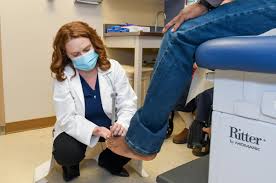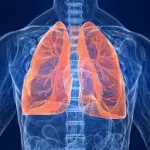Neuropathy, a condition characterized by nerve damage leading to pain and numbness in extremities such as the feet and hands, is alarmingly underdiagnosed, according to a recent study published in the May 8, 2024, online issue of Neurology®, the esteemed medical journal of the American Academy of Neurology.
The study, led by Melissa A. Elafros, MD, PhD, from the University of Michigan in Ann Arbor and a member of the American Academy of Neurology, sheds light on the pervasive nature of neuropathy and its profound impact on individuals’ quality of life. Dr. Elafros emphasized the staggering statistic that more than one-third of individuals with neuropathy experience sharp, prickling, or shock-like pain, which not only increases rates of depression but also significantly decreases overall well-being.
Furthermore, the study highlights the severe consequences associated with neuropathy, including an increased risk of falls, infections, and even amputations. Alarmingly, individuals with neuropathy also face a higher risk of premature death, irrespective of other underlying health conditions, underscoring the urgency for early identification and treatment.
The research, conducted at an outpatient internal medicine clinic primarily serving Medicaid patients in Flint, Michigan, involved 169 participants with an average age of 58 years, with a significant representation of Black individuals. Half of the participants had diabetes, a well-known precursor to neuropathy, while a substantial 67% had metabolic syndrome, a cluster of risk factors associated with neuropathy, including excess abdominal fat, high blood pressure, abnormal triglyceride levels, elevated blood sugar, and low levels of high-density lipoprotein (HDL) cholesterol.
Disturbingly, despite the high prevalence of risk factors, a staggering 73% of participants were found to have neuropathy, with a shocking 75% of them having gone undiagnosed prior to the study. Nearly 60% of those diagnosed with neuropathy reported experiencing debilitating pain.
The study further revealed a significant association between metabolic syndrome and neuropathy, with individuals afflicted with the syndrome being over four times more likely to develop neuropathy compared to those without.
In a bid to explore the intersection of race and income with neuropathy, the study found no correlation between low income and neuropathy incidence. However, Black individuals exhibited a decreased risk of neuropathy, despite forming the majority of both the neuropathy and non-neuropathy groups.
Dr. Elafros emphasized the critical need for interventions aimed at improving the diagnosis and management of neuropathy, along with the imperative to address underlying risk factors. However, the study acknowledges limitations, including its static nature and the absence of long-term follow-up to track neuropathy development and reasons for inadequate risk factor management.
The study received support from esteemed institutions such as the National Institute of Neurological Disorders and Stroke, National Institute of Diabetes and Digestive and Kidney Diseases, and National Center for Advancing Translational Sciences, underscoring the significance of its findings in shaping future research and clinical interventions aimed at tackling this pervasive yet underdiagnosed condition.











